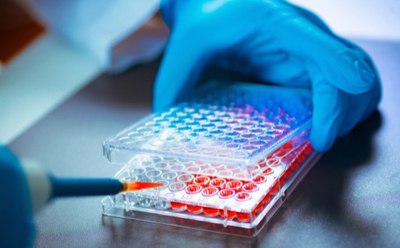Tissue Engineering

Tissue engineering and regenerative medicine are interdisciplinary fields aimed at developing biological substitutes to restore, maintain, improve tissue function, or replace diseased and damaged tissues. Both hard tissues (e.g., bone, cartilage) and soft tissues (e.g., skin, cardiovascular valves) can be fabricated by tissue engineering. Cells, scaffolds, and growth-stimulating signals are three key components for engineering tissue substitutes. Whereas tissue engineering cultures tissue in vitro, regenerative medicine combines tissue engineering with other strategies, including cell-based therapy, gene therapy, and immunomodulation, to induce in vivo tissue regeneration. Biomimetic tissue constructs are also developed as in vitro models for drug screening and disease modeling.
Tissue engineering involves cultivating new tissue in the lab by combining scaffolds, native tissue cells, and bioactive molecules to emulate the biological processes of the body.
Featured Categories
Discover our selection of polyethylene glycol (PEGs) and PEG derivatives in a wide range of molecular weights for all your PEGylation needs and applications.
Milli-Q® systems offer innovative water purification technologies engineered to support lab research needs, sustainability goals, and other major requirements.
Biocompatible materials and bioinks optimized for 3D bioprinting and tissue engineering ensure high printing fidelity and cell viability.
We offer an extensive range of natural and synthetic biomedical polymers with advanced properties suitable for all your biomedical applications.
Tissue scaffolds are analogous to the functions of extracellular matrix (ECM) in native tissues. Tissue scaffolds provide a structural and physical environment for cells to grow, migrate, and respond to signals; mechanical properties to the resulting tissue; and bioactive cues to the residing cells for activity regulation.
Three major approaches have evolved to develop tissue scaffolds that mimic native ECM functions:
- Seeding cells on pre-made porous scaffolds from degradable biomaterials, including decellularized ECM from allogenic and xenogenic tissues, natural polymers, bioglasses, and synthetic polymers
- Cell sheet engineering by seeding cells on thermo-responsive polymer-coated culture dishes and detaching the polymer sheet once the cells become confluent
- Cell encapsulation in a hydrogel matrix made of natural or synthetic polymers, such as bioinks, in 3D bioprinting
Visit our document search for data sheets, certificates and technical documentation.
Related Articles
- Find reversible addition–fragmentation chain transfer(RAFT) polymerization process, classes of RAFT agents & applications.
- Three-dimensional printing technology applications range from personal tools to aerospace equipment.
- Functional materials for printed electronics applications enable flexible displays, RFID tags, and biomedical sensors.
- Methacrylated hydrogels enable 3D cell culture scaffolds and bioprinting using light crosslinking.
- Three-dimensional (3D) printing of biological tissue is rapidly becoming an integral part of tissue engineering.
- See All (36)
Find More Articles and Protocols
How Can We Help
In case of any questions, please submit a customer support request
or talk to our customer service team:
Email custserv@sial.com
or call +1 (800) 244-1173
Additional Support
- Chromatogram Search
Use the Chromatogram Search to identify unknown compounds in your sample.
- Calculators & Apps
Web Toolbox - science research tools and resources for analytical chemistry, life science, chemical synthesis and materials science.
- Customer Support Request
Customer support including help with orders, products, accounts, and website technical issues.
- FAQ
Explore our Frequently Asked Questions for answers to commonly asked questions about our products and services.
To continue reading please sign in or create an account.
Don't Have An Account?



